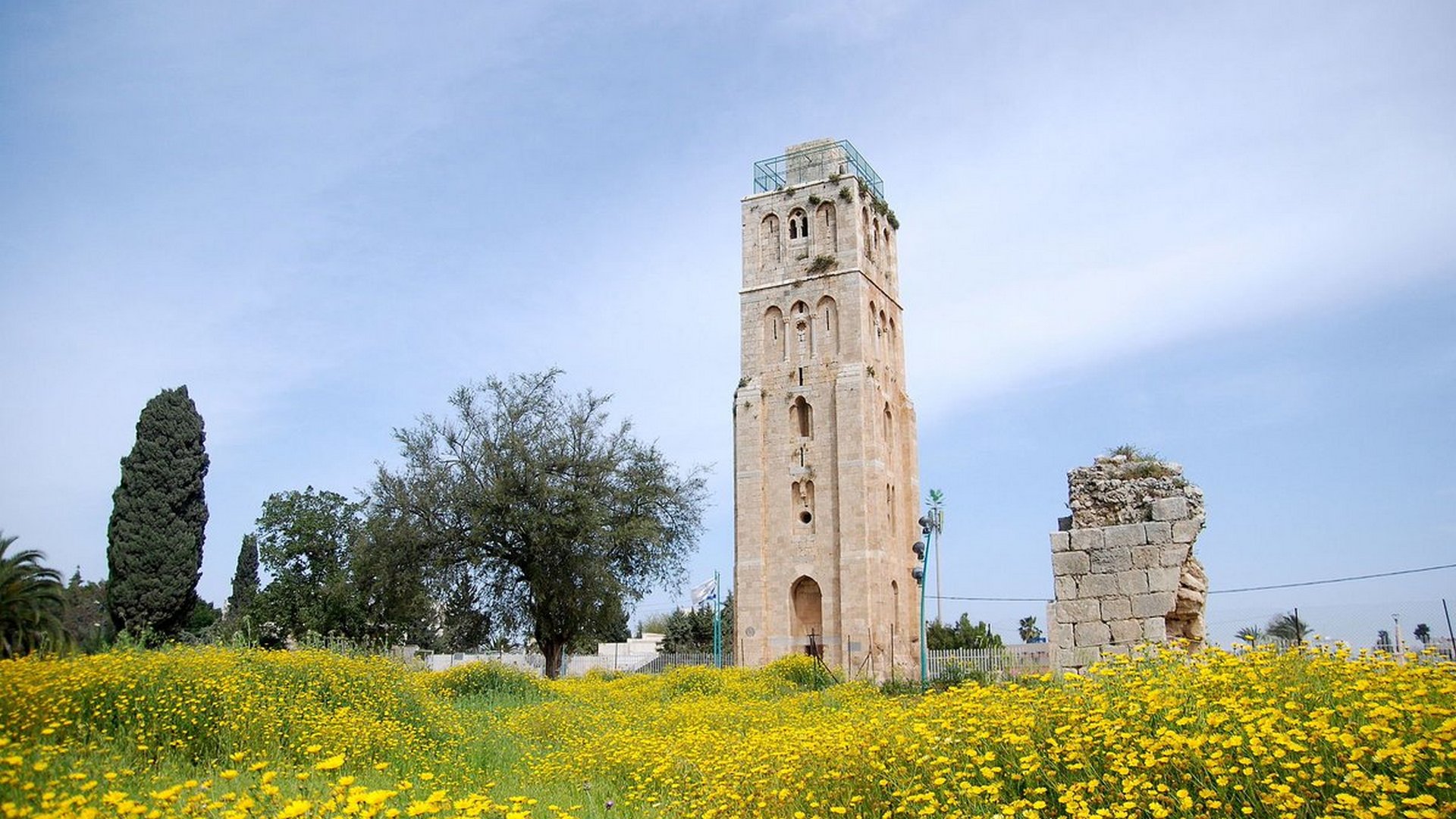Description
Property Name: Great Mosque of Ramla, White Mosque, Ramla
Inventory No: 972-2-30
Date of infill of the inventory form: 2020-08-26
Country (State party): Palestine
Province: Ramla
Town: Old City
Geographic coordinates: 31°55’39.96″N
34°51’56.94″E
Historic Period: Umayyad
Year of Construction: 715-117
Style: Umayyad, Mamluk
Original Use: Mosque
Current Use: Ruins left except for the large minaret
Architect: Unknown
Significance
The White Mosque in Ramla or (the Great Mosque) is an archaeological mosque that dates back to the Umayyad era in Palestine, located in the old city of the Palestinian city of Ramle. Its construction was ordered by Caliph Suleiman bin Abd al-Malik in (715 – 717) and it was completed during the reign of Caliph Omar bin Abdul Aziz in 720 CE after the conquest of Palestine and the whole of the Levant, and after Ramla became one of the important centers for the conqueror Muslim armies heading to Egypt. The mosque was rebuilt again during the Mamluk era. Today nothing remains of the mosque except for the large minaret.
The mosque was constructed of local marble and stone and was called the White Mosque, and it is described as one of the most beautiful and wonderful mosques in the Old City in Palestine. What distinguishes its beauty and unique architecture is the square-shaped minaret with a rectangular plan and with five floors, decorated with windows and niches for ventilation and lighting. The minaret is 27 meters long. It was built by Caliph Hisham bin Abdul Malik from marble columns. In addition, the main doors of the mosque are constructed of cypress and cedarwood and carved with Islamic phrases
Selection Criteria
i. to exhibit an important interchange of human values, over a span of time or within a cultural area of the world, on developments in architecture or technology, monumental arts, town-planning or landscape design
ii. to bear a unique or at least exceptional testimony to a cultural tradition or to a civilization which is living or which has disappeared
vi. to be directly or tangibly associated with events or living traditions, with ideas, or with beliefs, with artistic and literary works of outstanding universal significance
State of Preservation
In 1034 the mosque was destroyed after a severe earthquake in the old town of Palestine, and the White Mosque became a pile of rubble. In 1047 the mosque was rebuilt under the supervision of the architect, Elias bin Abdullah. During the reign of the Ayyubid dynasty, the mosque was attached to a western wall with a wide flash in 1190. In 1267, the third phase of the mosque’s restoration began after the Crusader occupation of Jerusalem was ended, on the orders of the Mamluk Sultan Al-Zahir Baybars, and the dome was merged, the pulpit was placed and the construction of a minaret, but it was demolished after a major earthquake, which made Sultan Muhammad al-Nasir bin Qalawun order to renew the minaret in 1318. The last restoration of the mosque took place during the time of the Ottoman Sultan Muhammad Rashad, 1844-1918 AD. Today the mosque is a ruin except for the large minaret, it is in bad condition and in need of restoration works
References
Yusuf, Faraj Allah Ahmad. 2011. Mosques of Palestine: under the Zionist occupation. Dar Al-Qalam, 2011.
Web sources
Archnet website: http://archnet.org


